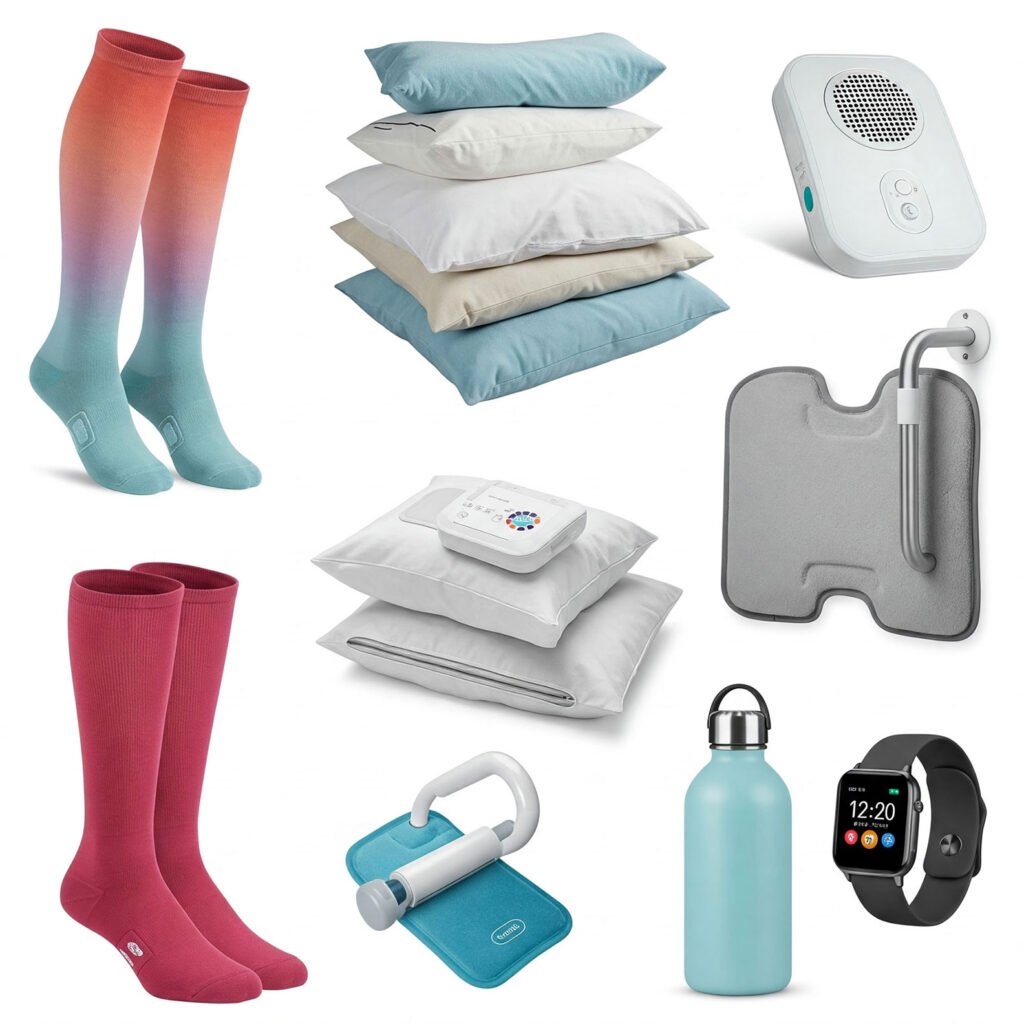Living with Postural Orthostatic Tachycardia Syndrome (POTS) often means navigating a constantly shifting landscape of symptoms—heart palpitations, dizziness, fatigue, brain fog, and more. These symptoms don’t always follow predictable patterns, making daily life a balancing act of pacing, hydration, diet, and medication management. That’s where symptom tracking comes in.
More than just a checklist, symptom tracking with POTS is a strategic tool for reclaiming control and finding clarity. This blog breaks down how tracking your symptoms can support better care, reveal key patterns, and help build a bridge between your lived experience and your clinical treatment.
What Is Symptom Tracking for POTS?
Symptom tracking is the process of recording and monitoring the frequency, intensity, and triggers of physical and emotional experiences linked to POTS. It typically includes:
What exercise equipment do you find most helpful for POTS?
- Heart rate and blood pressure monitoring
- Dizziness and presyncope episodes
- Energy levels and fatigue
- Cognitive issues (brain fog)
- GI symptoms like nausea or bloating
- Sleep quality
- Fluid and salt intake
Depending on your needs, symptom tracking may be analog (notebooks, charts) or digital (apps synced with wearables). Some even integrate with Apple Watch, Garmin, or smartphone-based journals to automate data collection.
Why Symptom Tracking Matters
Improved Communication with Providers
Your specialist may only see you every few months—but your symptoms are happening every day. Consistent tracking creates an objective record of what you’re experiencing, helping your doctor:
- Identify symptom clusters
- Adjust medications with precision
- Rule out other conditions
- Plan diagnostic testing more effectively
Discovering Patterns and Triggers
Tracking helps uncover the invisible patterns in your condition:
- Does dizziness flare with weather changes?
- Are GI symptoms worse after certain foods?
- Is brain fog tied to poor sleep or low hydration?
These insights allow you to make informed lifestyle adjustments—whether it’s changing when you eat, avoiding overstimulation, or pacing better during flares.
Empowerment and Self-Awareness
There’s a psychological lift that comes from understanding your body’s rhythms. Tracking transforms unpredictable symptoms into data points you can act on. It supports confidence, validation, and deeper body literacy.
What to Include in a POTS Tracker
A customized tracker can be tailored to your main concerns. Consider logging:
Core Vitals
- Resting heart rate
- Heart rate upon standing (every 10 min)
- Blood pressure (if able)
- HRV (Heart Rate Variability)
Daily Symptoms
- Fatigue severity
- Dizziness / lightheadedness
- Presyncope or syncope episodes
- GI issues
- Thermoregulation (feeling hot/cold)
Lifestyle Factors
- Sleep quality
- Fluid intake
- Salt consumption
- Medication times
- Exercise (recumbent, walking, pacing)
- Stress levels or emotional notes
Tools for Tracking: Digital vs Paper
Digital Apps
Apps like Visible, Bearable, Flaredown, or even Google Sheets offer customizable symptom input, charts, reminders, and export options for sharing with doctors.
Benefits:
- Automated trends
- Easy visualizations
- Cloud storage backup
- Device syncing

Analog Trackers
Bullet journals or printed templates allow tactile control and may reduce screen time—especially helpful if light sensitivity is an issue.
Benefits:
- Full personalization
- No tech dependency
- Can include mood, art, and journaling
Choose the method that feels most intuitive and sustainable for you.
📝 Printable Tracker Templates
- Awareness for POTSies Daily Tracking Sheet
Offers a comprehensive spreadsheet with editable columns for heart rate, symptoms, triggers, and lifestyle factors. Available in Google Sheets, Excel, and PDF formats. You can customize it for a full year of tracking. - Chronius Health POTS Symptom Tracker
Includes both a printable PDF and a Google Sheets version. It’s designed to help you log symptom severity, potential triggers, and daily routines. You can even add it to your phone’s home screen for quick access. - Etsy Printable POTS Management Tracker
A beautifully designed PDF planner that includes daily symptom logs, hydration and salt intake checklists, medication reminders, and even mood tracking. Great for those who prefer a more visual and reflective format.
Pacing and Planning With Real Data
Tracking supports pacing, a technique used in chronic illness management to prevent crashes and maintain a stable baseline. With symptom logs, you can:
- Adjust routines to avoid burnout
- Space high-energy activities with recovery breaks
- Predict upcoming flares based on trends
Pacing isn’t just about slowing down—it’s about doing more with less symptom chaos.

GnarlyTree | DIAGNOSTIC TESTS & CARE
Top WORLD POTS Clinics and Specialists | Where to Find Expert Care
Living with Postural Orthostatic Tachycardia Syndrome (POTS) can feel like navigating a maze of symptoms, misdiagnoses, and medical uncertainty. For many patients, finding a specialist who truly understands autonomic dysfunction...
Frequently Asked Questions
Why should I track my POTS symptoms?
It helps you understand patterns, communicate with doctors, and make proactive choices for symptom management.
What should I log daily?
Heart rate, symptom severity, medication, hydration, sleep, and anything else that impacts your day.
How does tracking help with flares?
You may identify triggers before a flare worsens, allowing for earlier intervention or rest.
Can I use symptom tracking for disability documentation?
Yes, detailed tracking supports legal documentation, workplace accommodations, and insurance reports.
What’s the best tracking app for POTS?
The best app depends on your needs; many use Visible, Bearable, or spreadsheets paired with wearables.
Should I track symptoms even if they’re stable?
Yes, consistency reveals long-term trends that may shift slowly over time.
Is there a tracker specific to dysautonomia?
While not universal, some apps allow custom field entries tailored to autonomic disorders.
Can tracking help my mental health?
Absolutely—it can reduce anxiety by demystifying symptoms and affirming your experience.
How often should I review my symptom data?
Weekly reviews can help spot trends; monthly reviews are helpful before specialist visits.
Final Thoughts
Symptom tracking with POTS isn’t about obsessing over every heartbeat—it’s about reclaiming some structure in the uncertainty. Whether you’re newly diagnosed or years into your journey, tracking empowers you to understand your own patterns, advocate for yourself, and support your care team with real insights. It turns invisible symptoms into actionable data and helps you participate in your health as a co-pilot, not just a passenger.



